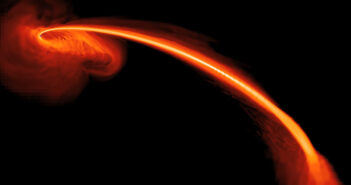
Features
Monthly Roundup (Halloween Edition): Graveyards of Shredded Stars
Researchers have identified dozens of stars tidally disrupted by black holes, and upcoming surveys may discover 1,000 of these rare events each year. Today’s Monthly Roundup introduces three studies that have advanced our understanding of shredded stars.







